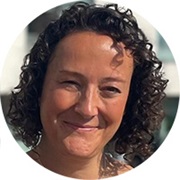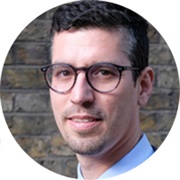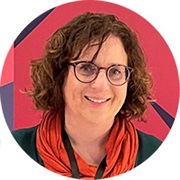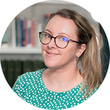- OT
- Professional support
- Health services
- How shared care relationships can revolutionise eye care
A conversation about...
How shared care relationships can revolutionise eye care
Two local optometrists and NHS Gloucestershire’s director for clinical programmes speak about why developing and maintaining shared care relationships is vital for the future of eye care

07 October 2023
In Gloucestershire, eye health is one of the area’s longest standing clinical programme groups – providing benefits for patients, practitioners, and the wider healthcare infrastructure.

Kerry O’Hara
Occupation:Programme director for clinical programmes, NHS Gloucestershire

Alvaro Borges
Occupation:Optometrist and vice chair of Gloucestershire LOC

Karen Gennard
Occupation:Optometrist at Norville Independent Opticians, Cheltenham, new clinic development manager at Vision Care for Homeless People, and AOP Councillor for South West England
Launched in March 2023, the system allows all community optometry practices in Gloucestershire to see HES images and data, with the aim of making informed decisions and improving patient care.
Here, two optometrists and NHS Gloucestershire’s director for clinical programmes speak about Community Ophthalmic Link, developing and maintaining shared care relationships, the challenges and benefits, and why this approach is vital for the future of eye care specifically.
Could you outline the shared care schemes that you have that are specific to eye care?
Kerry O’Hara (KOH): We have a number of clinical programme groups in Gloucestershire, and eye health has been one of the longest standing ones. We’ve had the group since 2015. It’s made up of representation from what was the Clinical Commissioning Groups (CCGs), now the Integrated Care Board (ICB), as well as secondary care, the independent sector, the Local Optical Committee (LOC), primary eye care services, charities, and people with lived experience.
That group has been working together for a really long time. One of the biggest benefits about Gloucestershire is that we have those relationships. I think if you went and spoke to other systems, they would say some of what we are doing they can’t possibly do, because they don’t have those close working relationships. The strategy for Gloucestershire has been driven equally by everybody in that group, and with patients and the patient voice and those people with lived experience telling us what could be improved in eye health.
What we really need is that big step change, to go, “what is truly transformational in eye health?” For us, that’s about shared care opportunities. Ageing populations, growing need – it's not enough to do just small stuff.
There was a lot of drive regionally. That meant looking at electronic referrals, looking at advice and guidance, and seeing what support we could give to the community. We took a step back in Gloucestershire and said, “without having access to shared information, and the ability to share images between primary optometry and secondary eye care services, the impact that that's going to make, is really small.” So, what would happen if we turned it on its head and said, “Could we do a big digital transformation and allow our community optometrists to have access to all the information about the patient? In the same way that people view their GP as the gatekeeper to their care, how do we make community optometrists the gatekeepers of patients’ care for eye health?”
Community Ophthalmic Link
Is being accessed over 130 times per week in Gloucestershire
In order to do that, and with our eye on the future, we’ve also secured Health Education England funding, so we can give community optometrists access to higher education opportunities, so that when we reach that two-way communication stage, we can then really look and say, “what are the skills that we’ve got within community optometry? How do we move some of that work that doesn't need to be sitting in secondary care out into the community and create those opportunities?”
Alvaro Borges (AB): I’m Portuguese, and I’ve only been in the UK around 11 years. I landed in a place where I didn’t know what the norm was and how things would work. 12 years ago, there was already glaucoma shared care; there were already cataract pathways in place. More things came, but my perception was that there was already shared care and community optometry was working together with secondary care for the benefit of those patients. I later realised that that was not the same everywhere.
Karen Gennard (KG): I’ve been in the county for nearly 25 years, so it’s really the only place I’ve worked. You take what you’re seeing on a day-to-day basis as being the norm. It’s not until you start talking to people in other counties that you realise those systems aren’t in place. The fact that that’s been in place for [us for] such a long time means that those communication lines are already there.
Gloucestershire LOC was one of the first counties to have direct cataract referral. It’s built from there. We have become the people who patients are coming to first of all for their eye care.
There is already funding in place for extra qualifications – optometrists can build on their skills, but then actually use them. It’s pointless having those additional qualifications and not being able to use them.We have become the people who patients are coming to first of all for their eye care
In Gloucestershire we have really good communication both within and between optometry practices, but also with our colleagues in secondary care, with GPsm and through the work that NHS Gloucestershire does. I think a lot of that came about during COVID-19, where we had to work together. It has built on that.
It’s a really joined-up system, and Community Ophthalmic Link has been a huge change. You can’t underestimate the difference of being able to say to somebody, “okay, let me just check on your hospital records and we’ll see when your next appointment is; we’ll see when you last went in,” or “yes, this is what the consultant said last time they saw you.”
People, when they go into their ophthalmology appointments, don’t always take everything on board. To have access to that information, to look at the scans and say, “this is exactly the same as it was six months ago, we don’t need to worry about it,” is really beneficial to the patient in reducing unnecessary referrals, but also for giving people reassurance that they’re being cared for.
Some patients expect you to have that information. They’re surprised that you don’t already know what’s happening. But to be able to see the images is key to patients. It’s a quick, easy system for us as well. It doesn’t hold you up in practice at all.
KOH: As a non-clinician, I’ve worked on the eye health programme for the past three years. It wouldn't be an underestimation to say that ophthalmology is like a foreign language. I can put myself into the shoes of a patient who is sitting in a clinic and trying to understand some of the language used. Patients need time to process. They are far more likely to ask questions of their optometrist than they are while sat in their outpatient appointment, which might feel rushed.
Being able to get that care is one of the biggest benefits we have seen from implementing Community Ophthalmic Link. It’s a way of reducing activity into secondary care, so reducing unnecessary referrals. But one of the bigger benefits has been where the optometrist has reported that they’ve been able to share the treatment plan and the care record with the patient and improve that patient’s ability to understand their own condition, to follow the treatment plan into self-care, and know that that patient will know to go back to their optometrist or back to secondary care when they see a change in their condition. I genuinely believe that we will prevent avoidable sight loss by having this system in there, by allowing patients to understand their conditions better.
AB: Unfortunately, as Kerry said, there’s going to be plenty of work for secondary care departments, trusts and eye hospitals to deal with macular degeneration injections. There is a lot of complex eye care, as we have an ageing population. This backlog from COVID-19 is going to take a long time to sort. But regardless of that, the pressure will continue.Patients need time to process. They are far more likely to ask questions of their optometrist than they are sat in their outpatient appointment, which might feel rushed
In Gloucestershire, we have glaucoma services in the community. We have a cataract integrated pathway. Pre and post-hospital, we have the COVID-19 Urgent Eyecare Service (CUES). We have paediatrics. We are about to launch a low vision service. We have the Vision Care for Homeless People (VCHP) clinic in Gloucester.
To support all of that, we have the extra funding for higher qualifications. Community Ophthalmic Link is hopefully going to support all the work around medical retina, where imaging is vital for shared care work and virtual clinics – all the things the NHS wants to progress.
I thought this was the norm. But with my Local Optical Committee Support Unit (LOCSU) hat on, going around the country, you start to realise, “oh, wait a second. That’s not how it is everywhere.” It can be quite frustrating, when you go somewhere else and say, “why don’t you do this?” They say, “Oh no, I think we need to analyse and see if it’s worth it.”
Being very proud of myself and our patch, I say, “why don't you look at us and see what we are doing? The benefits are out there.” There is a frustration, but at the same time it’s an exciting time to be part of all of these things, and to try to push things forward.
Do you have to consistently work to develop those shared care relationships?
KOH: We do. As a clinical programme group, we meet every two months. That’s a shared agenda – it's driven by the membership and the priorities that we set. Outside of that, we regularly meet on our project team meetings. Obviously, you get a turnover in personnel, so it is that constant drive to maintain those relationships, but the work is done within building them.When we embarked on Community Ophthalmic Link, it took a long time to get there. We went everywhere to ask for funding. A lot of the pushback was that “you will never get community optometrists to do this.” Other people’s experiences and the relationships they had suggested that they were not going to be interested or want to put their time and effort into it.
We kept saying they were wrong. This has absolutely been developed with our community optometrists. It’s not something we’ve been doing in isolation. It is going to work because we have those relationships in place.
It’s easy to think that we're going to solve the problem of eye health in this country by meeting with secondary care. I think ICBs build those relationships between themselves, GPs, and secondary care. They miss out this massive opportunity of working with people who would like to be the gatekeepers of eye health in the county. Patients will tell you, in Gloucestershire, that an optometrist is the trusted professional they go to about their eye health.
AB: These relationships are about building trust, and it is long-term work. It’s many, many years of building the teams and the relationships, so that when the projects are needed, people respond.
KG: From an optometrist perspective, those relationships only work if you see that things are happening and changing in a positive way. If you’ve got your ICB or your LOC doing things that aren't working, or where it’s not easy for you, it becomes frustrating.
Each time we’ve had a new system put in place, each time we’ve had new referral pathways, it has worked. You’ve got that confidence when somebody comes to you and says, “we’re going to put this into practice, you’re going to be able to see the records.” You trust the team that are behind it to implement the technology well, and then it doesn’t become a burden, it becomes something that helps you. That’s why you get the cooperation of the optometrists. You see the benefits from the very first patient record you open. You can see how it’s going to make your practice easier, and you can see how you’re going to benefit the patient. When you’re in your clinical practice day-to-day, that’s what you really want.
ICBs build those relationships between themselves, GPs, and secondary care. They miss out this massive opportunity of working with people who would like to be the gatekeepers of eye health in the county
Coming from different organisations and with slightly different perspectives, how do you go about making sure your goals align?
KOH: The people with lived experience in the group give us that balance and challenge us, when people are coming up against organisational boundaries. We’ve got people who have very different interests in that group, who are coming from very different perspectives. But we have those people with lived experience to keep bringing those back to what’s important. Bringing those different perspectives gives us strength within the group.
AB: We got into this because we want the best for patients. Having them there, with that lived experience, is best for communication. That is the way to go. In Gloucestershire, because we have had so many shared care services for such a long time, that pushes the boundaries to be really innovative. It was here that diabetic eye screening was launched. It was here that a lot of those first shared care schemes for cataracts and glaucoma started, 15 or 20 years ago. It’s here that we’re pushing again, towards cutting edge innovation to transform optometry and the way things are delivered in primary eye care.
KG: It means, as an optometrist, you can use the skills that you have. You can take higher qualifications, you can make use of that, and you can build on that. That makes for a more interesting job as an optometrist. There is now a wider range of what people do as well. Your day is much more varied. From a work perspective, that is lovely.
Which shared care projects have had the biggest impact?
KOH: Talking volume, it’s Community Ophthalmic Link. That’s our big transformation. It’s going to provide us with a completely different landscape, and we’re going to change the way that care is delivered in Gloucestershire.
If we are talking about one that we can’t quantify the benefit of necessarily, it would be the VCHP project. We’re talking about a relatively small number of patients, a relatively small investment for those patients, but an absolutely massive impact on people’s lives.
KG: We can only do that because of the support we've had from NHS Gloucestershire: financial support, support put in by Kerry and colleagues, and LOC support. It is a proper team effort. It is small numbers of people, and it is low cost, but it makes a difference every time you go into clinic.
KOH: People say that they want to tackle inequalities. We look at that widening inequality gap that we’ve had since COVID-19. VCHP is absolutely on the ground, tackling inequalities for a group of people that don't access eye health. It probably wouldn’t even occur to them, in many cases. We’re being really proactive about trying to close that gap for that group of patients.
How many people does Community Ophthalmic Link reach currently? What is it hoping to achieve?
KOH: It is now accessible from every optical practice in Gloucestershire and at the moment, we are having the system accessed over 130 times a week by optometrists. If there are 130 patients on the end of that who are benefiting in some way, either by not having a referral that they didn't need, or by being given better information about their care and their treatments, that is absolutely transformational. 130 accesses to the system are resulting in something different for that patient.
Could you speak about some of the barriers or challenges you have faced?
KOH: Funding. It’s great to be innovative, but it’s really difficult to make a case for change. We went round many national, regional and local bodies, trying to find funding for Community Ophthalmic Link, but there has to be a point where you say, “I can’t fully tell you what the benefits of this are going to be, because nobody has ever done it before.”
But you have to trust your instincts. Gloucestershire has been really good at realising you have to take that leap of faith and believe that longer-term this is going to pay off, because we need to do something different within eye health. We’re not going to continue to manage the growing demand in eye health by doing the same thing.
AB: One thing to emphasise, despite the constraints and the challenges of funding, which are substantial, is that none of the other shared care services we built over the years were decommissioned. They were never taken away. The moment that starts to happen, practitioners start to lose the trust, and they stop engaging. They ask, “is it worth increasing my skills to deliver on those services?” So, are they funded and commissioned appropriately, to be worth dedicating practices’ time?
Over the years you have that service, patients know that you can deliver it in the community. It builds, as a pyramid, on the services you already have, for ever more tailor-made and innovative services. That’s what you're doing, but you need people on your side, like your commissioners, to go out for funding and keep on pursuing that.
Anything to add that we haven't spoken about already?
AB: I took the position as Gloucestershire LOC chair right before the pandemic. I inherited an LOC that had a good relationship with optometry, with dispensing opticians, and with all the practices in the county. I inherited all this hard work that was built over many years.
There has been a level of stability in Gloucestershire over the years that helps with all these transformation programmes and changes that we’ve implemented. It is instrumental for LOCs, as their function, to support practitioners in their area in all sorts of things, to build that trust to say, “if I’m going to develop a low vision pathway, we are considering you as the best possible service. If you have CUES, we support it with all our communication channels, so that practices and practitioners can ping off each other for advice.” Otherwise, it’s too burdensome and things start to fail, and the trust to keep on going just is not there.
With shared care, you need to have a commissioner who is really engaged and passionate about primary care. It doesn’t work if they don't believe in you. But you also have a community of optometrists, dispensing opticians and professionals, together with the LOC, to navigate this landscape.
KG: A lot of it does come down to communication. It is a really collaborative effort. Practices are all running their individual businesses, so there could be push back and economical constraints and things like that. But the communication and the way that the LOC sets the agenda means that isn’t such an issue. Those barriers aren’t there. It is a proper community, across Gloucestershire.
AB: In Portugal, you would never send a patient to another practice. One of the first things I noticed when I came to the UK, in any business, was that sometimes they would say, “I don’t have this product. Why don’t you try the competition down the road?” It took me years to realise that actually, this makes sense. I don’t mind at all that you go to my colleague down the road to be seen. A lot of patients understand the difference, and go back to the original practice. When you talk about win-win solutions, that’s one of those. Patients benefit, and the practice can retain their customers.
KG: There aren't really enough independent prescriber (IP) practitioners around, and being able to say, “is there somebody with IP who is free today to see a patient?” means that patient then goes to another practice, and they don’t end up in hospital. From the patient’s side of things, that’s a huge benefit. You learn to manage patients in a more appropriate way.


Comments (0)
You must be logged in to join the discussion. Log in